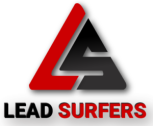The advancements in artificial intelligence (AI) are significantly reshaping the field of language translation, especially in real-time communication. AI-powered translation tools are now able to bridge language barriers more effectively, providing instantaneous translations across multiple languages. This is enhancing global communication in ways that were once unimaginable, making cross-cultural exchanges smoother and more accessible.
At the core of AI-based translation is natural language processing (NLP), a subfield of AI that focuses on the interaction between computers and human language. NLP enables machines to understand, interpret, and respond to language in a way that is both accurate and contextually appropriate. Early translation systems often struggled with nuances, idiomatic expressions, and cultural references. However, modern AI systems, backed by machine learning and deep learning algorithms, are becoming increasingly adept at understanding context, tone, and the subtleties of human language.
Real-time language translation is particularly impactful in global business environments, where fast and effective communication is crucial. AI-driven tools like Google Translate, Microsoft Translator, and various custom-built solutions are being used in meetings, conferences, and negotiations to provide instant translations. These tools allow participants to converse in their native languages while the AI translates spoken words or written text in real time. This not only speeds up communication but also reduces the risk of misinterpretation, which can be a critical issue in high-stakes business discussions.
One of the key drivers of AI in real-time translation is the development of neural machine translation (NMT) models. NMT uses deep learning techniques to build models that can translate entire sentences at once rather than word by word. This enables more accurate and fluid translations because the model can consider the entire context of a sentence or conversation. NMT models learn from vast amounts of bilingual text data, improving their translation capabilities over time. These models can now handle a wide range of languages, including those that have traditionally been underrepresented in translation technology.
Another significant advancement in this area is the integration of AI translation with wearable devices and mobile applications. Wearable tech, such as earbuds or smart glasses equipped with real-time translation capabilities, allows users to communicate across languages without needing to look at a screen. These devices can instantly translate spoken words and deliver them directly to the user in their preferred language. This is particularly useful for travelers, business professionals, and expatriates who need seamless communication in multilingual environments.
The rise of AI in language translation is also transforming sectors such as education and healthcare. In education, AI-powered translation tools are enabling students from different linguistic backgrounds to access learning materials in their native languages. This is creating more inclusive and diverse learning environments. In healthcare, real-time translation is critical for doctors and patients who do not share a common language. AI tools can facilitate communication during consultations, ensuring that patients receive the correct information about their health and treatment options.
Despite the many benefits of AI in real-time language translation, challenges remain. One of the primary concerns is ensuring the accuracy of translations, particularly in specialized fields like law, medicine, and technology, where precise terminology is essential. While AI models are improving, they are not yet infallible, and errors in translation can have serious consequences. Additionally, AI translation systems often require large amounts of data to function effectively. For languages with limited digital resources or dialects that are not widely spoken, achieving high-quality translations can be difficult.
Another challenge is the ethical considerations surrounding AI in language translation. The technology raises questions about privacy, as real-time translation tools often require access to sensitive conversations. Ensuring that these tools comply with data protection regulations and that users’ information is kept secure is essential. Moreover, as AI translation becomes more prevalent, there is a concern that human translators could be displaced. While AI can handle many routine translation tasks, the role of human translators in nuanced, high-context communication remains critical.
Overall, AI in real-time language translation is opening new doors for global communication, making it easier for people from different linguistic backgrounds to connect and collaborate. As AI technology continues to advance, we can expect even more sophisticated and accurate translation tools that will further break down language barriers in our increasingly interconnected world.
From Our Editorial Team
Our Editorial team comprises of over 15 highly motivated bunch of individuals, who work tirelessly to get the most sought after curated content for our subscribers.




